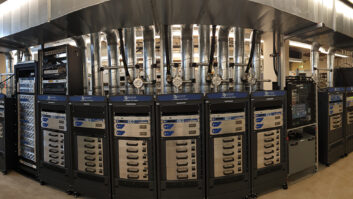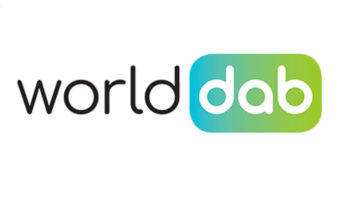The next step for technology
Dec 1, 2005 12:00 PM, By Kevin McNamara, CNE
Remember the phrase �paradigm shift?� It was used extensively in the 80s and 90s largely to point out an event, typically some new technology that caused people to do things in a different manner. Presumably, this event made your life simpler or more organized. We haven’t heard this term used in recent years, but I think we’re on the verge of another shift. I believe this is a direct result of five things:
- The interoperability of digital devices across a wide variety of platforms.
- Federal regulations providing new spectrum for existing and emerging technologies.
- Increased competition in the marketplace.
- Decreasing price-points for equipment.
- Widespread and low-cost broadband Internet access availability to the general public.

Consumer devices are more integrated than ever. This LG phone includes a Web browser, camera, media player and more.
Consider that technology over the last five years stayed pretty stagnant in terms of cool, new things. Yes there was higher-speed wired Ethernet and wireless Ethernet equipment got better (and sold more), but during that time, technology companies were still working through standards issues as well as dealing with the need to reduce costs to roll-out their respective goodies and have a chance of reasonable sales. But take a look around now, everything seems to work together � cell phones, PCs, printers, PDAs, the TV, the MP3 player and the list goes on. There is also a trend toward the creation of the ultimate do-everything device. For example, there are mobile phones that also include personal organizers, MP3 record and playback, radio tuner, e-mail and Web browser that connect seamlessly to other devices using a wireless personal area network (PAN).
There are a few technologies that are likely to cause a paradigm shift over the next five years.
Mobile telephones
Perhaps the most obvious paradigm shift we are beginning to see is the transition of consumers disconnecting traditional wireline telephone service in favor of using the mobile phone as the primary telephone line. Beginning in November 2003, wireless carriers were required to enable telephone number portability, starting with systems operating in the top 100 MSAs, subsequently smaller markets were also required to enable this feature. This was a critical step in the ultimate growth of wireless usage. Here are some recent tatistics from the CTIA to support this idea:
- 194.5 million subscribers
- More than 65 percent wireless penetration in the United States
- 6 percent of U.S. households use wireless phone as primary
- 675 billion minutes of use in the first six months of 2005 (up 31 percent from same period in 2004)
- 32.5 billion SMS messages in the first six months of 2005 (up 32 percent from last six months of 2004).
Another interesting statistic is that the revenue for wireless data use over mobile telephones in the first six months of 2005 was $3.7 billion � up 85 percent over the same period in 2004.
Carriers have been aggressively moving forward with system upgrades that permit it to offer next generation technologies using its current allotment of frequencies. Over the next few years the FCC will be able to issue additional spectrum to existing wireless carriers and provide newly created allocations intended for emerging wireless applications.
The wireless carriers are in a unique position where they are not strictly limited to providing telephony services. In the larger plan they want to provide a wide range of data-based services beyond simple mobile data connectivity. Many of the major carriers have signed content deals with major providers and are currently offering that audio and video multimedia content to users. In the near future you may here the acronym �IMS� (IP Multimedia Subsystem), which simply put, allows handset devices to become another IP device (address) in the Internet world.
Cable services and VoIP
Current cable technology permits operators to provide a large data pipeline across its franchised area and thus allowing it to provide a wide range of services to its customers including high-speed Internet access. While the technology itself may not qualify as causing a paradigm shift, it does enable other technologies to flourish. According to the NCTA cable service passes 110.2 million homes throughout the United States. Of this number about 23.5 million homes are cable modem customers.
One such flourishing technology is Voice over IP (VoIP), a protocol that permits voice data to be carrier over an IP network. Currently, you might see this protocol offered to consumers as a means to communicate with users at specific destinations through the use of special software loaded on the PCs at each end, or through the use of special software and hardware that connects directly to a facilities-based provider that can route the call through the public switched network-basically you end-up with a dial tone on your regular telephone device. Cable operators are aggressively offering the latter as an add-on service to regular cable.
Personal area networks
PANs were designed to allow devices to communicate with each other, typically only within a few meters of each other. In more simple terms PANs can replace the wiring currently used to connect PCs to printers, external drives and other peripherals. We also are beginning to see the use of PANs in mobile phones and personal organizers permitting them to communicate with other enabled devices such as PCs and wireless headsets.
There are a few flavors of PANs offered, most intended for different applications. Bluetooth provides a means to connect and exchange data between two devices within about 10 meters (although specs exist that permit ranges up to 100 meters) and 1Mb/s. Bluetooth-enabled devices are beginning to show-up on a number of devices including becoming standard equipment on certain automobiles.
Zig Bee permits low-power communications between several devices (up to 256) with range up to 500 meters. Zig Bee appears to be the coming the standard for wireless control and communications for alarm systems, appliances and other uses.
Ultra-wideband (UWB) technology provides an extremely wide bandwidth signal (500MHz+) that is range limited to about 10 meters. This is an ideal method to transport high-bandwidth information between professional and consumer devices such as digital multimedia streams between recorders, players and monitors. Imagine not having to run wires for a home entertainment system or studio for that matter.
McNamara is president of Applied Wireless, Cape Coral, FL.












